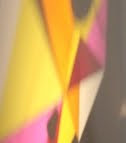

i was thumbing through a late 1950's issue of art news and found this image of a sketchbook page of juan miro, along with a transcription of the text - the two large "images" taking up an entire page.
i was struck by how "ordinary" the text looks within the context of the notations, and how surprising it was to find text typeset in such a visual way in the midst of a magazine where the design was incredibly formal and "stuffy". visually, in this context, the text layout was a lot more "shocking" than the artworks pictured.
i originally thought the designer was trying to make the layout of type resemble the graphic qualities of miro's line forms in his paintings, before i realized he or she was simply following the logic of the word paths in the notebook page pictured directly above it.
it wasn't until i finished exploring the relationship of these visual forms that i finally decided to read the text...and of course, detached from their accompanying images and their context as notations, they are quite beautiful as concrete poems...
here in clockwork order:
woman on a beach, this
figure is too realistic, make
use of symbols-signs-
to interpret it, like in 1940
in the face violently red cheeks
like those of a cheap doll
white background
in some spots, like the head, make use of a very violent black contour
this cloud is too realistic. interpret the clouds with
the poetic symbols of 1940. so that these canvases have
a "fauve" spirit, but within the poetic (field) so that
they recall in a certain way the good canvasses by matisse.
but going beyond them and more furiously "fauve".
the color of the
figure can perfectly,
in some places, be that
of the background
black line will be
separated from color
by a band of
canvass not filled-in
in some spots
reinforce black line
for the background
put color directly
on canvas and spread
it with hand, rag, fist,
sponge, and so forth
Labels: 1940, clouds, concrete poetry, miro, notations, notebooks




















